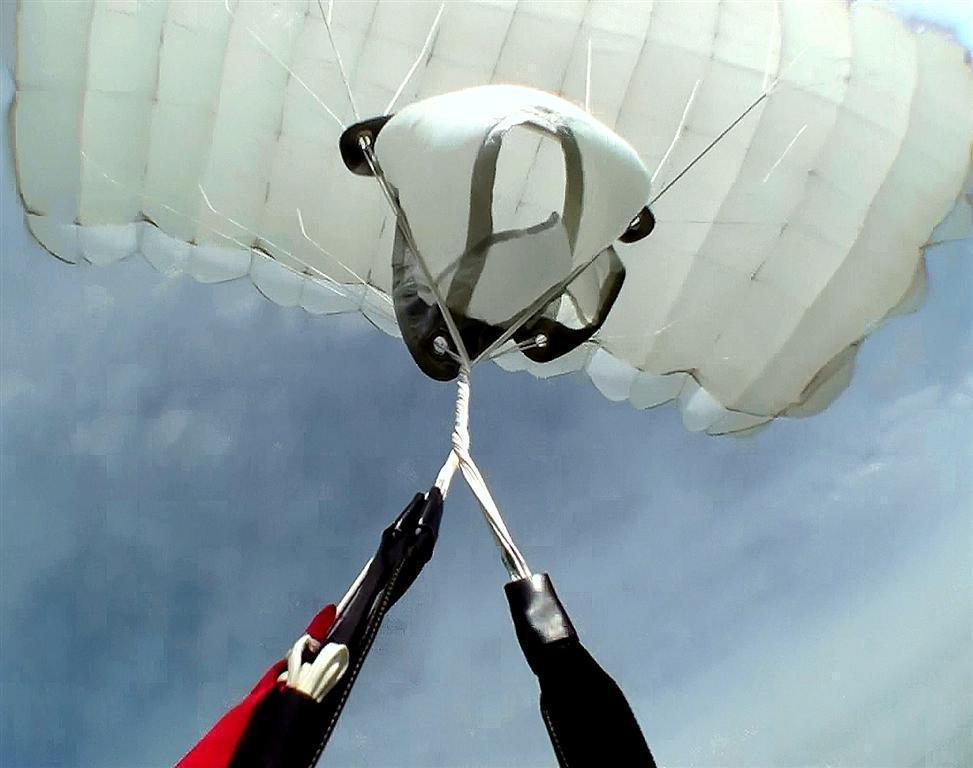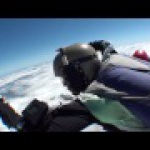Leaderboard
-
in all areas
- All areas
- Adverts
- Advert Questions
- Advert Reviews
- Videos
- Video Comments
- Blog Entries
- Blog Comments
- Images
- Image Comments
- Image Reviews
- Albums
- Album Comments
- Album Reviews
- Files
- File Comments
- File Reviews
- Dropzones
- Dropzone Comments
- Dropzone Reviews
- Gear
- Gear Comments
- Gear Reviews
- Articles
- Article Comments
- Article Reviews
- Fatalities
- Fatality Comments
- Fatality Reviews
- Stolen items
- Stolen item Comments
- Stolen item Reviews
- Records
- Record Comments
- Record Reviews
- Help Files
- Help File Comments
- Help File Reviews
- Events
- Event Comments
- Event Reviews
- Posts
- Status Updates
- Status Replies
-
Custom Date
-
All time
January 20 2016 - April 23 2024
-
Year
April 23 2023 - April 23 2024
-
Month
March 23 2024 - April 23 2024
-
Week
April 16 2024 - April 23 2024
-
Today
April 23 2024
-
Custom Date
08/10/2020 - 08/10/2020
-
All time
Popular Content
Showing content with the highest reputation on 08/10/2020 in all areas
-
2 pointsWell, that automatically excludes Trump then. Fucking hell you are a case study in cognitive dissonance
-
2 pointsThankyou for following up! I'm now super curious how I arrived at this belief, from memory we laid some of the demo canopies from PD over each other, and on the ol' anecdata butt dyno a velo *definitely* doesn't look as oval as that diagram staring at it from below. I appreciate the correction though, cheers.
-
1 pointHave you ever realised that you feel something is not right in the system and something must be done about it? The question is how many times you did something to improve things…..? Avoidable Fatalities The purpose of Education in Skydiving and Rigging is to facilitate learning. Nothing else! All things learned are important and often vital to the skydiver- our sequence emergency procedures, wrong decisions under pressure and improperly done maintenance and repairs can end in disaster and they have. If there is any other interests involved in the education system- the process is ineffective. Also there is a difference between education in skydiving and public schools. If students in public education are to experience the result from what they learned in school or college years after graduation, skydiving students will need what they learned literally the same or the next day. A study was carried out by Hart, Christian L. and Griffith, James D. (2003) "Human Error: The Principal Cause of Skydiving Fatalities". Here are a couple of points: “Of the 308 fatalities that were reported between 1993-2001, 264 (86%) were categorized as Human Error, indicating that human error was deemed to be the principal causal factor in the mishaps. The remaining 44 (14%) fatalities were categorized as Other Factors, indicating that human error did not play a principal role in those mishaps. Therefore, human error appears to be the principal causal factors in the great majority of skydiving fatalities. Within skydiving training and education programs, specific attention should be given to human error, and training should be deliberately aimed at reducing human error mishaps. In the design of parachuting equipment, attention should be given to designing systems that increase skydiver situation awareness and increase the probability of correctly carrying out deployment and emergency procedure while under stress and time pressure.” I find it unacceptable that in the 21st Century with the level of science and experience in the sport we have 86 percent fatalities that have resulted from avoidable mistakes. In skydiving, critical situations require making correct decisions and executing proper action. This causes increases in pressure and cognitive load, beyond the state of flow that impairs our ability. When the cognitive load increases, our limited cognitive capacity is exceeded and we become overloaded. Our brains cannot process the large volumes of information being generated by the situation and we can fail to make accurate decisions. Example is tandem bag lock malfunction- requires very fast thinking, change of standard emergency procedures, reaction and execution when RSL is connected. However, if RSL is not connected- things are way easier- action is as usual- cutaway and reserve deployment. This is just an example where correct training can significantly reduce the pressure or lead to positive outcome. Knowing that there is direct connection between the previous training taken and how the skydiver would react under pressure is vital. Namely our gut feeling is what determines our reactions under pressure and lack of time. It all happens simultaneously before we put everything in words. So someone that has never used RSL as a backup system would go first for the reserve handle after cutaway and will almost never check for main risers clearance. In the late 80’s and 90’s of the last century, there were significant discoveries in phycology that explain a lot how and why humans make certain decisions under pressure. Unfortunately skydive training still has not caught up with psychology. Mirror neurons is one of these discoveries. For example, neurons in our brain fire symmetrically to match our instructor’s emotions. So, if the instructor is very positive, enthusiastic and smiling, about 20-30% of the neurons in the same area in the student’s brain, responsible for these emotions fire as well. The result is that students assume that if the instructor is that positively charged- everything must be in order. It is the same when the instructor looks negative, unhelpful, concerned- the student is experiencing a grade of freeze, flight response and the performance goes down. This is just a generalisation but it explains why students love enthusiastic instructors, regardless how competent they are. However, students also can identify incompetence hidden in positive attitude. There is also an explanation for that recently discovered. In this article, I will try to scratch the surface on training. Combining psychology and training in skydiving is going to be part of a different publication. In skydiving we have two types of Education- Safety education and skills improvement training. They overlap and mix all the time but they stay different things. Example is the training during the new skills courses- initial AFF, Tandem and AFF Instructor certifications. They all have two parts- the Safety part, which teaches the student/candidate/ how to survive the skydive with the new equipment and procedures and the Skills improvement part- how to do it well. This is very important since decision making is heavily influenced by the level of competence and skills in these separate areas. Both, the student and the teacher/instructor/ should know where they stand in that- at what stage of the training and learning process they are. Even more, the training for a particular skill must match the psychological reasons influencing how the student will react in this situation. It’s important to know why people make fatal mistakes and how to avoid them- you never know when a simple flight back to the landing area can turn into a situation that requires emergency procedures. Approaching Education Differently Looks like education in skydiving suffers from a bit of amnesia! It is based on the industrialised system of education. This system came out during the industrial revolution and it was designed to serve the needs of the manufacturing process- to produce a workforce that follows algorithms. Basically, it’s a system that tells you how to do things, without much explaining. The student is instructed not thought. This all works well when in the manufacturing! And we have all seen the big emergency procedures charts that look like wiring diagrams like they are designed for a computer processors to follow. However, people are not machines but organic creatures and in addition they have to make their own decisions under pressure. Industrialised system is based on standardisation and conformity! It is true that these principles are a must in skydiving and they define the skills necessary for surviving the skydive with- must know, must do and must not do. But there must be a clear line where they begin and finish because any irrelevant and wrong information or negative emotions significantly affect the decision making process. The fact that a student does not understand what causes our bodies to turn in freefall creates negative emotions and can cause them to fail the stage. Conformity and standardisation also contradict the principles on which skydiving and life for that matter have flourished over the years- diversity and creativity. Every single person is different. Not a single person’s life is the same as anybody else’s. There’s no two persons on this planet that are the same. So why skydiving training is standardised to that extent? One of the results is that year after year there’s a great amount of people that give up skydiving after they get their A licence. And the reason is that they don’t want to spend a long time and a lot of money doing relative work with B rels. Most of the students started skydiving because they wanted to do something else- usually freeflying or swooping. There is a great amount of students that never complete the AFF course as well. If a private company was losing such an enormous amount of their clients every year, they would say- “Maybe it’s not the customers, maybe it’s something we do”. If equipment and training courses were put under the compatibility lid some time ago, they would never advance more than the static line course and round military parachute stage! People are also curious and creative. They want to learn. Everyone knows that students and instructors start their career with a great amount of curiosity and want to learn and keep this going forever. Curiosity is the engine of achievement. One of the effects of the current culture, has been to de-professionalise instructors. There is no system in the world that is better than it’s instructors. Instructors are the lifeblood of the success of drop zones, but teaching is a creative profession. Teaching, properly conceived, is not a delivery system. Instructors should not be there just to pass on received information. Great instructors do that, but what great teachers also do is mentor, stimulate, provoke, and engage. Another big problem with the industrial based system is that it never covers everything that we need to know because it is based on what has happened so far. Especially in recent years, it presents you with a list or diagrams with possible situations. What happens if you get into situations that are not on the list?! Then you need creativity! A good example is the tandem fatality resulted from a turn initiated at about 200ft and the control line and toggle got hooked on the disconnected side passenger connector. The tandem pair entered into a continuous diving turn. The tandem instructor ran through the given emergency procedures diagram but there was nothing for this particular situation. The most he could think of was- cutaway and deploy reserve. Unfortunately it was too low. However, there were at least two solutions in this case that were not on the diagram- cut the break line and try landing with risers or counter the turn with the other toggle and land on deep brakes. Compliance in this situation didn’t equal safety but provided a false sense of safety. Situations like this require some creativity or divergent thinking. And we use divergent thinking all the time in skydiving- when we exit and fly different tandem clients, when different aircraft changes the inflight procedures, when tailoring the stage for a particular AFF Student, when packing reserves or repairing equipment etc. “Divergent thinking is a thought process or method used to generate creative ideas by exploring many possible solutions. It typically occurs in a spontaneous, free-flowing, "non-linear" manner, such that many ideas are generated in an emergent cognitive fashion. Many possible solutions are explored in a short amount of time, and unexpected connections are drawn.” There is another system of education, which is based on reasoning, where cause and effect are the significant element. This is the system to which we owe the development in skydiving and skydiving equipment- people trying different things and improving the ones that work. With this system, understanding how and why things happen is the driving force. That’s how basic military parachutes were improved for sport parachuting to get to the current state of the art canopies and harness containers. This is how we all got where we are now. With this system, the student’s safety and progression are the important thing, not the standard of “pass or fail” and the learning process can be tailored so the students can learn effectively. In this system both- student and instructor are aware of the level of competence /unconscious incompetent, conscious incompetent, conscious competent, unconscious competent/ the student is in. Right now there are thousands of consciously incompetent skydivers and instructors about their own equipment but they are expected to deal with extraordinary situations with competence. They simply do not know how their reserve system or components exactly work and what potential problems they can cause them. As a result, these licenced skydivers are not ready to deal with a number of issues. If you knew that if the Cypres fires in head position and the reserve might hesitate, how materials and body position affect the reserve openings, what the reserve pilot chute is, etc. you would consider your actions. The level of competence/competence- confidence loop/ directly affects the performance and decision making in every situation- challenging or threatening. The more competent you are with equipment and situations, the more pressure is reduced and it is easier to make decisions. All this is not that new and there is wonderful work done by instructors and dropzones. However, it is happening not because of the current standardisation and command and control culture but despite it. Yes, sometimes habit is stronger than reason, but reason always prevails eventually. Maybe it’s time the available knowledge in the 21-st century about learning, training, psychology and the connection between them to be implemented accordingly. While doing that, some accidents could be prevented. After all, skydivers are organic creatures and parachutes are just mechanical systems operated by skydivers. Nothing magical happens up there! The magic we feel is only in our heads! --------------------------------------- K.B Jumps - 25 000+ AFF, Tandem Instructor, Freefall Photographer Rigger- FAA all types, APF Rigger Examiner Master of teaching, Biology and Chemistry
-
1 point
-
1 pointHi Nigel, Hmmm, you just be onto something there. Let me think about it some more. Hey, Coreece, what do you think? :) Jerry Baumchen
-
1 pointI'd hold off a couple weeks before buying. You will probably get a better deal from his widow.
-
1 point
-
1 pointWell, the QCumbers are going to have more to bitch about, but a harder time doing so. FB shut down one of the more popular (and populous) Q pages. https://www.bbc.com/news/amp/technology-53692545?fbclid=IwAR3BEFP3HHqqnm9GPQHprFe-R-pkk3Oj-mo_1HCepPAFTJzzkT5tgdP70Ps#referrer=https%3A%2F%2Fwww.google.com&_tf=From %1%24s
-
1 pointPretty sure its a function of what license they hold. So a coach with a B needs it after 90 days. A TI with a D needs it after 180 days. That's just for jumping, though. There are other currency rules for different instructors, and them acting as an instructor (or a coach, which is a type of instructor). I believe that's in the IRM, not the SIM.
-
1 pointWell....remember that part about the reward and if it is worth the cost? For most people, especially starting out, a large part of the reward is the adrenaline rush. You can't really get that without some fear. It's part of the reward system in your brain.
-
1 pointIn all seriousness, I don't actually much give a shit about Trump's mispronunciation - it's not the first time (by him or other presidents/candidates), it's probably not even the worst he's done, and it's pretty easily explainable by his demonstrated issues with reading in general. My horror/bemusement was with his sycophants - actual, professional, adult type people - boldly claiming over and over that this was the real way to say it and that everyone who's been saying Tie-land were just uncultured plebs. I think it might be the most cultish behaviour I've seen yet.
-
1 pointBecause they WANT IT TO BE TRUE. They want to believe that all the 'liberals' are going to be taken to Gitmo and put in cells. Starting with Hilary. Their hatred is so strong, they ignore reality. When the first real Q claim was that there were children being molested in the basement of a restaurant that doesn't have a basement, it should have been done. If the QCumbers had ANY sense at all, any critical thinking ability, they'd see that all the claims are groundless. Nobody's been arrested, no one is going to 'save them' from the "Deep State". Which would be a bit difficult, seeing as the 'Deep State' is as real as Trump's business acumen. That gulliblity is one reason Trump came to power. He conned a bunch of people who wanted to believe in his crap so badly, so desperately, that they actually believed him. Many still do.
-
1 pointI strongly disagree with westerly .... but I made 1,000 tandem jumps before modern wing-suits were invented (circa 2000). UPY wrote those guidelines to discourage recreational jumpers from chasing tandems after a few collisions killed TIs. Most of the recreational skydivers who ask permission to chase tandems do not understand the extra risks involved. For example, the last time I gave a wing-suiter permission to fly past us under canopy, he passed at a safe and predictable distance. When I pointed out the wing-suit, the student did not seem to care. Shortly after that, the DZO banned wing-suits from "buzzing" tandems. Basic tandems are complicated enough without junior jumpers cluttering up their airspace. I would much rather double my TI work-load by strapping a camera to my hand than trust some unknown skydiver to freefall close to me. This comes from the first hand-cam TI in Canada. I taught myself how to do hand-cam after reading one article in SKYDIVING Magazine. The article described how Australians invented hand-cam. I even sewed my own hand-mount months before I ever saw a hand-mount.
-
1 pointI think Westerly's been drinking again. Usually his comments are very safety minded and conservative, and oft i agree with them. The two things that make a tandem lurk inherently more dangerous than a four way rw is the long drogue bridle and the possible actions of a panicky passenger. That being said, I don't think it's terribly dangerous if the ti trusts the skill of the lurker and the lurker has plenty of belly experience with group jumps. If I did convince a ti to let me lurk a friend, I'd definitely flip them a 20 for the extra work. They now have one more thing to be aware of and take into account.
-
1 pointBut that is not relevant to the subject here. The question is about a new lower time jumper lurking a tandem. Several things can and have gone bad in that situation. A normal tandem is not complicated. The decision tree and potential for things to go wrong make the possible EPs on a tandem jump extremely complicated.
-
1 pointNot wearing earplugs on every skydive? Hear me out (while you still can): It’s pretty damn important to add a pair to your every-jump kit, and your excuses probably don’t hold up to expert scrutiny. What expert? A lofty one. Last week, I got to talk to Dr. Anna Hicks* at length about the thorny matter of skydiving with a cold (watch the February issue of Parachutist for that one). At one point, our conversation took a slight diversion towards hearing damage. The content of that more than deserves its own moment in the sun: Our delicate soundholes, and the damage we don’t have to do them. So: Why aren’t you wearing earplugs on every jump? 1. Because it’s not that big a deal. If you like listening to things other than phantom roaring, then sorry. It kinda is. Each of us is born with 15,000 sound-sensing cells per ear. (I like to think of ‘em as magical hearing hair, because that’s kinda what they look like.) Hearing loss occurs when they die. It’s not just noise exposure that kills them; certain medications and other environmental factors and do it, too, but those are freak deaths by comparison. Once they’re gone, they’re gone. Birds, fish, and amphibians have the ability to grow back magical hearing hair. Mammals, like your average skydiver, lack the ability to regenerate these cells. All we can do is stick in a hearing aid and hope for the best. You don’t have to take my word for it. Talk to anybody who suffers from tinnitus and ask them if they’d have taken precautions to prevent it. 2. Because I don’t jump that much. Dr. Hicks begs to differ. “I see so many skydivers that have damaged their hearing,” she notes. “Even if you’re just doing 100 jumps a year, every time you jump, the engine is noisy, and the freefall is noisy, too. Over your skydiving career, that adds up to a lot of noise exposure.” “I still find some people that can’t be bothered with ear plugs even in the wind tunnel,” she adds, “but our hearing is too important not to take ten seconds to put them in every time. You don’t want to end up not able to hear your friend at the pub because you knackered your hearing from too much noise exposure.”** 3. Wearing earplugs in freefall is dangerous. If it’s not just laziness that’s keeping you from protecting your hearing, it might be a misplaced sense of safety. Dr. Hicks wears hers from ground to ground, and she recommends that you do too, even if it’s just on the way up to altitude. “I am a big advocate with any patient I see,” she says, “especially those whose job is skydiving, to wear ear plugs at least on the way up and ideally on the way down as well. Earplugs do not prevent situational awareness, stop you from being able to talk to your students, or to hear shouts under canopy. You can hear what you need to hear, usually you can actually hear your audible altimeter better because the background freefall crackle is reduced, and vitally, [wearing earplugs] reduces the longer-term damage we can experience from our sport.” Some people discover that they find a problem equalizing if they have earplugs in on the way down. Dr. Hicks’ advice: If equalizing is a problem for you, try using the vented plugs (which you can buy from a pharmacy for a few dollars) to better equalize during descent. 4. I can’t afford the nice ones and the foam ones cause ear infections. According to Dr. Hicks, that is not a thing. As long as the plugs are rated, they’ll provide the protection you need. “You can wear posh ear plugs or the cheap foam ones like you get in the tunnel,” she says. “Either-or.” According to a study of sixty long-range patrol-aircraft crew members, the idea that disposable foam earplugs cause ear infections is a total myth. The crew members were randomly divided into three groups: one wearing fancy custom-molded earplugs, the second using foam earplugs that they washed after each use, and the third group using foam earplugs washed only once per week. The study lasted eight weeks and included examinations by a medical officer as well as skin scrapings for bacterial culture and fungal examinations. The results indicated no fungal infections or clinically significant bacterial infections, and no differences in positive bacterial culture between the groups. Moral of the story: roll ‘em up and stick ‘em in. They’re going to prevent a heck of a lot more damage than they could possibly cause, and 50-year-old you (who doesn’t have to have the TV on FULL BLAST ALL THE TIME) will thank you. *Dr. Hicks is a certified badass. An active-duty Aviation Medicine specialist in the British Regular Army, she has logged more than 4,000 jumps over 15 years in the sport, many of which as the Outside Center for the multi-medaled British 4-way team NFTO. Dr. Hicks is also a British Parachute Association Accelerated Freefall Instructor and formation skydiving coach, as well as a Skydiving Instructor at Britain’s legendary Skydive Netheravon. Oh: and she was Tom Cruise’s personal aviation doc during the filming of the latest Mission: Impossible reboot. ‘Nuff said. **Confused? Ask a British person for a translation.
-
Newsletter







.thumb.jpg.4bb795e2eaf21b8b300039a5e1ec7f92.jpg)


